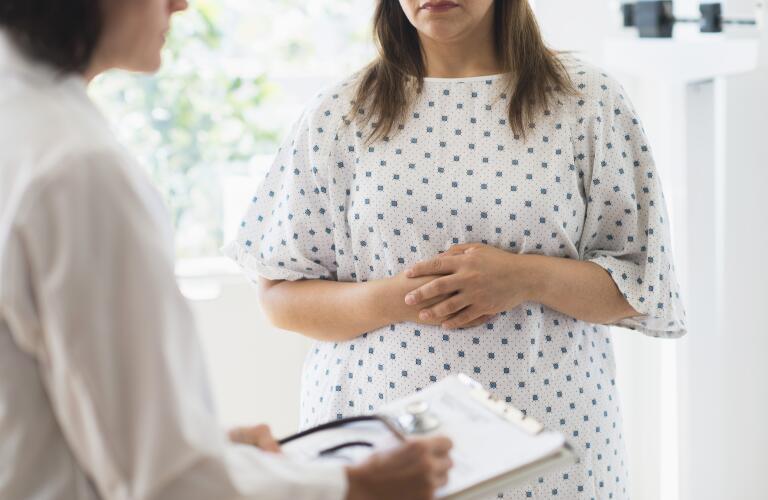
Hidradenitis suppurativa (HS), also known as acne inversa, can be an embarrassing (not to mention painful) condition. It’s also a serious health problem that requires medical attention. It occurs in the creases of the skin, like your armpits and groin, and begins with inflamed, painful nodules and abscesses, followed by tissue damage that could lead to scars.
While you may be hoping it goes away on its own, like the occasional face pimple, this condition requires medical attention. Make an appointment with your dermatologist and then follow these steps so you can make the most of your visit with him/her and cover all of your concerns. If you would feel more comfortable with a dermatologist of the same sex, make that request when you book your appointment.
Keep track of flare-ups.
While the exact cause of acne inversa isn’t known yet, medical experts suspect hormones play a role, as it often begins around puberty and some women experience flare-ups before menstruation. Write down the first time you noticed these breakouts, and dates that you had recent flare-ups. Take a few moments to consider what was going on in your life at that time and make notes about that as well. Were you premenstrual? Did you have a particularly stressful week? Were you recently sick? Any details about possible causes before the flare-up might help your doctor with diagnosis and treatment. Bring your notes with you to your appointment.
Bring your family medical history to the appointment.
One-third of people who suffer from acne inversa have a blood relative who has it. While it may be embarrassing to bring this up to a family member, it might be worth asking if any relatives had strange, painful breakouts on other areas of their body. (But remember, there’s a good chance that anyone else who had it kept it private, too.)
Talk about your lifestyle habits.
While this condition is three times as likely to occur in women as men (again, attributed to those hormones), it’s also more likely to affect overweight or obese people. While your weight isn’t causing these breakouts, research has demonstrated a link between overweight study subjects and acne inversa. During the conversation with your dermatologist, make sure you tell them if you are a smoker, since that habit has demonstrated a stronger predisposition to having the condition.
Prepare for your appointment.
Bring a pad and paper with your notes about when your flare-ups occur and list out all of your questions before you get face-to-face time with your dermatologist. You might want to take notes during the appointment or use the “voice memos” feature on your smart phone to record what the doctor says so you can remember it later. Most importantly, remember, your doctor has probably seen it all (and much, much worse) over the years. He or she won’t be judging you–your doctor’s focus is to help you resolve the issue as quickly as possible and without scarring.
Think about asking some of the following questions:
- Is this a skin reaction because I’m not showering enough or sweating too much?
- Is it contagious?
- Why is this occurring in my…underarm area, groin, buttocks area, upper thighs, genitals, under my breasts?
- Why do these bumps look like pimples, deep acne-like cysts and blackheads, folliculitis (a swollen pimple with a hair in the center), or boils?
- When will it go away?
- How can I explain this to a sexual partner?
Ask about treatment options.
Not treating your acne inversa can lead to serious infections, scars, or breakouts that rupture and leak a foul-smelling fluid. Your dermatologist will discuss different treatment options with you. Treatment options include biologics, triple-antibiotic therapy, topical retinoids, laser therapy, or even surgery for advanced cases.
There are still clinical trials going on to help the medical community get a better understanding of treatment options and prevention of this disease. Finding a dermatologist who specializes in this treatment will be your best bet for getting the help and healing you need. Ask your doctor which treatment options are best for you and even consider getting a second opinion if you’re not sure.



